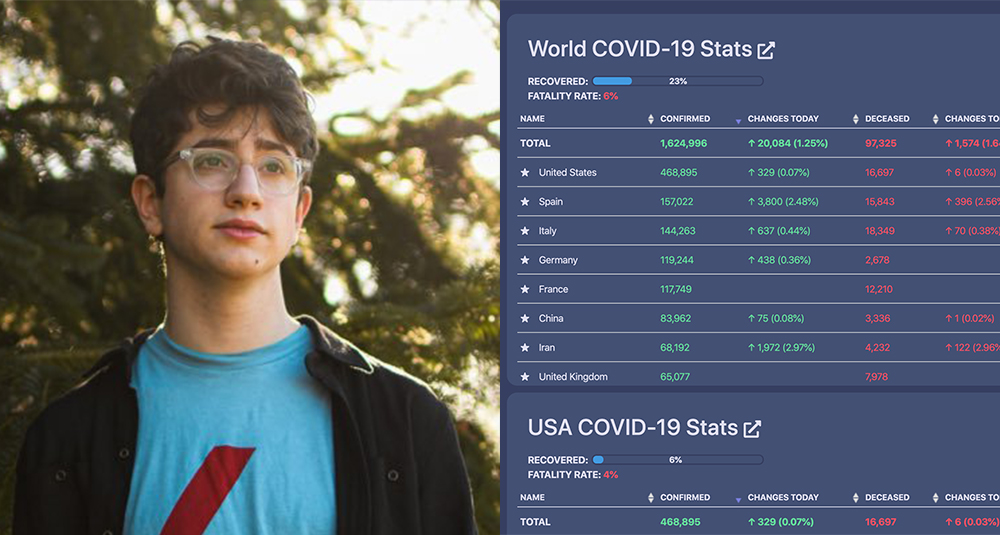Try This At-Home Side Hustle: Transcribing and Titling Videos

Looking for a new way to earn some money as a student while you’re stuck at home? Are you strong in English, or maybe other languages? If the answer to these questions is yes, read on.
In this article, we’ll introduce you to video transcription, subtitling and captioning: What it is, what skills make you a good fit, and some valuable places for interested students to quickly get started.
What is video-to-text transcription?
Transcription is the process of converting audio, whether a live event or a recording, to text. For our purposes, we are concerned with video-to-text transcription, turning the audio elements of a video into a textual transcript. We’ll consider how high schoolers can launch a freelance business in their spare time transcribing videos and creating subtitles or captions for them.
Transcription refers to any voice-to-text process. You can transcribe in the same language, or from one language to another. A transcription can be of two types: either a “verbatim” or a “clean-read.” Verbatim transcription — also known as literal or word-for-word – transcribes literally everything, including incomplete sentences, repetitions, speech errors, and unintended expressions like um, er, ah.
A clean-read transcription cleans up those additions and mistakes so that the resulting transcript is easier and more understandable to read. Which you will use depends on the client: if it’s to create an exact record of what was said, they’re likely to opt for verbatim. If they want the speech to sound more intelligent and coherent, they’ll probably prefer the clean-read transcription option.
What’s the difference between transcription, subtitling and closed-captioning?
Transcription conveys the full content of a recording in a transcript. But there’s another major reason to transcribe speech: to create titles that run along the bottom of a video. There are two basic types of title: subtitles are used to clarify speech for someone who can hear but not necessarily understand. Subtitles translate from one language to another or in the same language if the speech may be unclear to someone watching the video or film, or to non-native speakers.
The second main type of titles, close-captions, is used when audio cannot be heard, either because the one watching the video is hearing-impaired or because the video is played in a place – like an airport or other public building – where audio cannot be heard easily. Closed-captions can include not just words but also descriptions of sound. Again, your client will decide which of the two they need, or both.
What skills do I need to get starting in transcription and titling?
You don’t need a degree or certificate to become a transcriptionist. There’s plenty of opportunities out for freelance gigs, even for high schoolers. The transcription market in the US alone was valued at nearly $20 billion in 2019 and it’s expected to grow annually at a rate of over 6% from 2020 to 2027. With millions of videos uploaded daily, there’s plenty of demand for transcription.
What you need is a good listening ear and excellent language skills. If you are also translating, you’ll need to be bilingual. Above all, you will need to be patient and focused, able to sit for hours listening and typing. Subtitling and captioning requires the ability to extract the essence of what needs to be titled from a transcript. But if you have those skills, you can do the job.
Which software tools can help me with transcription and titling?
There are plenty of applications to assist transcriptionists. Do a web search for “video-to-text” or “transcription apps.” Two well-reviewed transcription apps are Dragon and Rev. On the web, Sonix is a superb transcription and translation platform, supporting 37 languages.
Cost is a big factor for high school students, so check out free transcription software like Easytranscript and Transcriber AG. If you’re translating, you can get free help from Google Translate or Microsoft Translator. Some transcriptionists prefer to listen to video speech and then repeat it into a microphone: if you do that, many common word processors offer dictation features that do a decent job of voice to text.
What can I get paid for transcribing and subtitling?
Only a small fraction of the transcription market will be available to someone starting out in the profession, but there’s plenty of work to go around. Beginners will also need to start out at the bottom. Typically, rates of transcription jobs are according to the length of the source audio: $25/hour is typical. Keep in mind that this rate refers to the original audio, not the time it will take you to transcribe. An experienced transcriptionist might require a 3 to 1 ratio for each transcription hour. A newbie will require more time.
Doing the math may be discouraging. You might make more by flipping burgers. On the other hand, you can work from home, make your own schedule, and get paid to watch videos. As you gain experience, you can make a decent income with almost no practical ceiling.
Where can I get a gig in transcription and titling?
Luckily, you’re not the first to take these skills online; many freelancer marketplaces exist with a category specifically for transcribing and subtitling services. Users can create a profile, indicate interests and skills, and get an idea of what peers charge for their services. In many platforms, you can search for transcription or translation jobs posted daily, responding if they’re within your ability.
Fiverr is an intuitive platform for students to start their own online store. They have dedicated categories for transcripts and translation among dozens of others, where users find great references for other people’s services and rates. Their terms of service dictate you must be 13 years old to use their site.
Upwork is a huge freelance marketplace for pretty much any technology-based solution. You’re likely to find plenty of relevant transcription jobs for which you can apply, though they do take a considerable fee for smaller contracts. A support article suggests you must be 18 to apply to join.
Freelancer is a smaller but still highly active website to create an online profile for transcriptionists. Their user agreement says you must be 16 to use their site.
Some tips to get you started:
- Keep your rates low at first, then raise them as your experience and positive reviews grow.
- Resist the temptation to go around a platform to avoid its 10-20% commission. The risks of getting booted are not worth it.
- Never try to pass off machine translation or transcription as your own. You’ll get caught sooner or later.
Creating any online profile can be daunting. If you’re unsure about the commitment, open a blank document and a video you like, and try transcribing a minute or two. If you’re on YouTube, play around with slowing down the video or pausing to let yourself catch up. Did you find it easy or hard? Are there any jobs on freelancer marketplaces that look good to you? Get searching!



